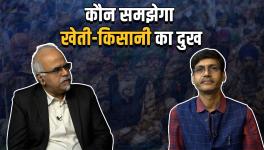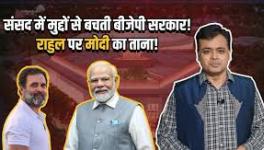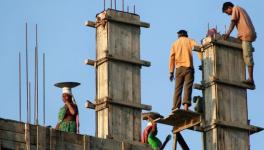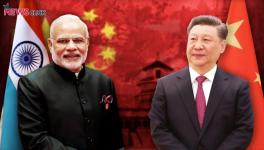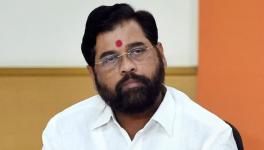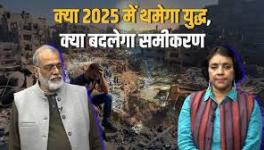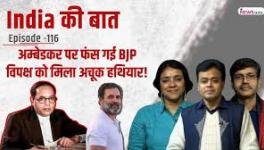A Simple Arithmetic
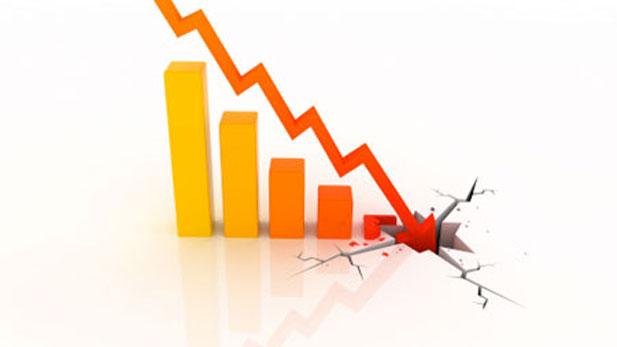
Image Courtesy: Emaze
THE Modi government is completing three years in office amid much fanfare and propaganda about its achievements during this period. Aiding this propaganda is the advance estimate of GDP which projects a growth-rate of 7.11 per cent for 2016-17, a shade lower than last year’s 7.93 per cent, but apparently impressive nonetheless. Despite the fact that the chief statistician has clarified that these figures are based on data for only seven moths (April-October) of the current fiscal year, and that the effects of demonetisation are not captured by this figure, the hype goes on undeterred.
STATISTICAL SYSTEM FALLEN ON BAD DAYS
India’s statistical system has fallen on bad days. There was a time when it was among the finest in the world and certainly the best in the third world. It conducted a sample survey that was not only the largest anywhere but was also based on a fairly sophisticated theoretical foundation. To be sure, in an economy with such a huge unorganised sector, the national income and other such macro-estimates were always shrouded in an element of doubt; but all users knew the pitfalls and made adjustments for them, so that even if the absolute figures were somewhat suspect, the direction of change of the macro-aggregates was less so.
Such, alas, is no longer the case, for at least four reasons. The first is the Modi government’s blatant interference in matters relating to statistics, of which the starkest example is the Reserve Bank’s refusal to release, even to this day, figures regarding how much of the demonetised currency actually came back to the banking system (for that would expose the utter failure of the demonetisation exercise in unearthing “black money”). The second is the new method of estimating GDP which is now in vogue and which the government’s own Economic Survey has castigated. The third is the fact that these infirmities are greatly compounded in the case of the advance estimates of GDP, where the data sources are extremely meager, and also based, to a far greater extent than warranted, upon information from the large corporate sector. When adjustments are made much later to these initial advance estimates, they hardly attract much attention, and the damage that is already done by the purveying of false impressions is scarcely ever rectified. And fourthly, quarterly GDP data are particularly suspect, since their information base is even more meager; they are used nonetheless for deriving political mileage, as the Modi government did with the 2016-17 third quarter advance GDP estimate to show that demonetisation had had no ill effects.
The advance GDP estimates for 2016-17 therefore signify very little. Let us however accept these estimates. Even these estimates however show a picture of the economy that is extremely grim and that has not at all figured in any public discussion. And this relates to the fact that over the three years of the Modi government, the real per capita income of the agriculture-dependent population in the country, which is roughly half the total population, has even declined in absolute terms.Let me discuss this issue, using only official data for my purpose.
Since the Modi government took office in May 2014, I shall take the year 2013-14 as my base year, comparing the figures for the latest year, 2016-17, with this base year. The advance estimate of GDP for 2016-17 suggests that the “GDP at factor cost” in agriculture and allied activities in current prices in this year would be higher by 9.64 per cent compared to the previous year. Using the estimate of current price GDP at factor cost in this sector for 2016-17 arrived on this basis, we can see that it is 20.6 per cent higher than in 2013-14.
The GDP at factor cost is a proxy for the income accruing to the sector. No doubt, the net domestic product is a better approximation for this, but the ratio between the two does not change much over such a short period of time. So, we can say that the total income accruing to the population that derives its income from agriculture increased by 20.6 per cent between 2013-14 and 2016-17. This population in turn supports families who in the aggregate constitute the agriculture-dependent population. So we can say that the total income supporting the agriculture-dependent population increased by 20.6 per cent between the base year before Modi came to power and 2016-17.
Given the rate of population growth according to official estimates, the population of the country over these three years would have increased by 3.9 per cent. And since in such a short period there is unlikely to have been any major shifts in the occupational distribution of the population, and any major shift in family size, we can take the agriculture-dependent population in the country to have also increased by 3.9 per cent between 2013-14 and 2016-17. This means that per head of agriculture-dependent population, the nominal income between 2013-14 and 2016-17 increased by 16 per cent.
REAL INCOME OF AGRICULTURE-DEPENDENT POPULATION REMAINS STAGNANT
The question however relates to real income. And to answer this we have to deflate the nominal income by a price-index, and the obvious price-index to take is the consumer price index for rural India. The increase in this index between February 2014 and February 2017 (the latest month for which we have official data till the time of writing), which can serve as a proxy for the April 14- April 17 increase, is 16.3 per cent, slightly higher than the rise in nominal income. This means that the real per capita income of the agriculture-dependent population in the country has remained stagnant or even marginally declined during the three years of the Modi government. The fact that the agriculture-dependent population accounts for more than half of the country’s total population, only underscores the seriousness of the situation.
I have not divided the total income accruing to the agricultural sector into the income of the producers (self-employed farmers and wage workers) and the income of those living off the surplus (profit, rent and interest). If the share of surplus in total income has increased over these years then the condition of the actual workers and their dependents must have worsened further. But even if the share of surplus in total income has remained constant, the above conclusion still holds.
I should also make it clear that both 2013-14 and 2016-17 were reasonably good agricultural years and hence comparable. In fact according to the advance estimates of GDP for 2016-17, agriculture was the only sector that posted a higher growth in 2016-17 than in the preceding year; in the other two sectors, industry and services, the growth rate actually came down compared to the preceding year. The growth rate of agriculture in 2016-17 was as high as 4.37 per cent. The above calculations therefore cannot be accused of exaggerating matters by comparing dissimilar years.
To be sure, the fact that the agriculture-dependent population saw stagnation or even a marginal decline in its per capita real income in the Modi years, cannot be blamed on Modi alone; and we, as persons committed to reason and eschewing hype, should not emulate the BJP in its methods. The stagnation of agriculture is a result of the pursuit of neo-liberal policies, which have entailed a withdrawal of the State from its role of supporting peasant agriculture and petty production in general, and of promoting instead the interests of globally-mobile capital, with which the Indian corporate capital is closely integrated. Modi’s culpability lies in the fact that he has pursued this policy with a vengeance, which also means that the grim fate that has visited the entire agriculture-dependent population during the Modi years till now, is not going to be reversed in the years to come. For this entire segment of the population there are no acchhe din in store as long as these policies continue.
It is particularly distressing to see that when over half the country’s population has witnessed no improvement whatsoever in its living standards, the high GDP growth rate of these years is being celebrated as a “great achievement”. One does not have to belong to the Left to be appalled by such celebration. Even a liberal economist like John Stuart Mill had said that he would not in the least mind a “stationary state” (ie, zero rate of GDP growth), provided the workers were better off in such a stationary state than in a growing economy. For Mill the condition of the workers took priority over GDP growth; he would not be celebrating the high GDP growth of the Indian economy if he knew that half the population had experienced a stagnation or even a marginal decline in its real per capita income.
The BJP of course lacks any sensitivity towards the plight of the poor; for it hype is all. One only wishes that liberal opinion in the country was louder in expressing concern over this plight.
Disclaimer: The views expressed here are the author's personal views, and do not necessarily represent the views of Newsclick.
Get the latest reports & analysis with people's perspective on Protests, movements & deep analytical videos, discussions of the current affairs in your Telegram app. Subscribe to NewsClick's Telegram channel & get Real-Time updates on stories, as they get published on our website.









